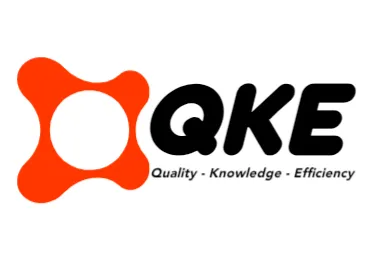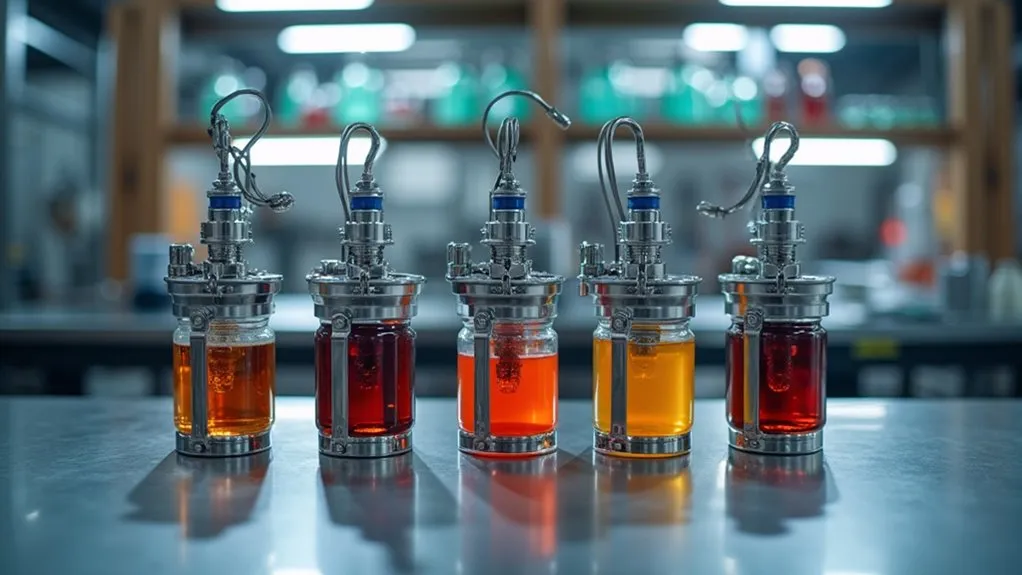For businesses seeking top jar labeling machines in 2025, consider these five options. The BenchMATE manual labeler excels for small-scale operations with speeds up to 30 jars per minute. Primera AP362, a semi-automatic choice, handles 1200 containers hourly for medium runs. High-speed automatic systems with servo control achieve over 600 containers per minute. Application-specific labelers adapt to unique shapes, while AI-driven technologies offer real-time precision. Explore further to uncover detailed insights on each.
Key Takeaways
- BenchMATE Manual Labeler: Affordable, hand-operated, labels up to 30 jars per minute, ideal for small-scale operations.
- Primera AP362 Semi-Automatic: Labels up to 1200 containers hourly, perfect for medium production with minimal training.
- High-Speed Automatic System: Achieves over 600 containers per minute, uses servo control for large-scale precision.
- Tapered Jar Labeler: Adapts to conical shapes, offers precision for unique jar formats in small batches.
- AI-Optimized Labeler 2025: Features real-time adjustments and IoT for smart tracking, enhancing efficiency and sustainability.
Leading Manual Jar Labeler for Small-Scale Operations
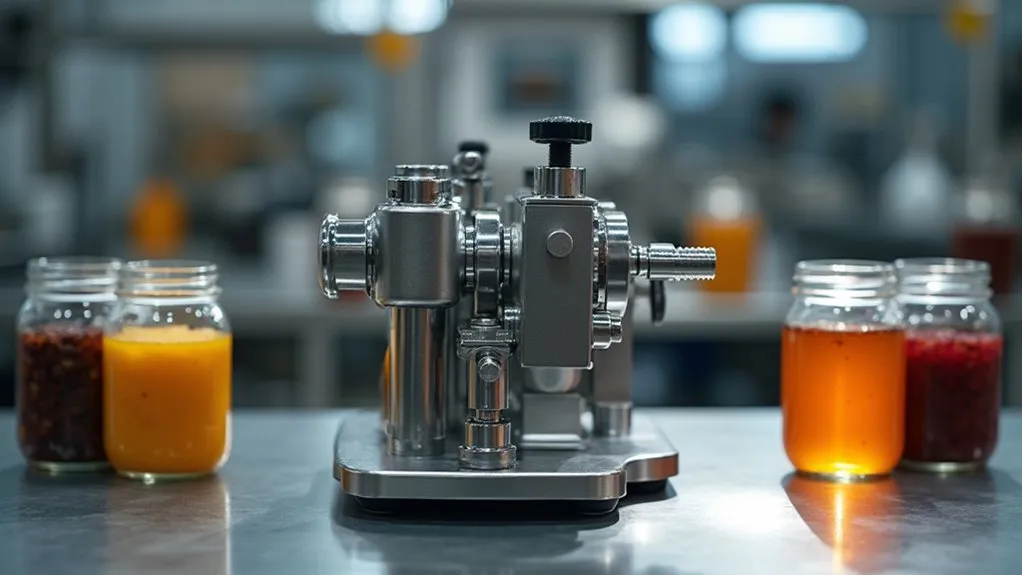
For small-scale operations, startups, and boutique manufacturers, manual jar labelers offer a practical entry into labeling automation. These devices, characterized by Hand Operation, rely on a crank or handwheel, requiring no electricity, which enhances their portability and simplicity. Designed for cylindrical jars of various materials, they support self-adhesive labels in roll form, ensuring consistent, professional placement at speeds up to 30 items per minute. Notably, machines like BenchMATE offer 10x faster labeling than traditional manual methods, making them ideal for entry-level startups.
As Budget Options, manual labelers provide a cost-effective solution, with prices ranging from under $100 for basic models to $3,625 for robust units like those from Race Label Solutions or Great Engineering. Their compact design suits small workspaces, while tool-free adjustability accommodates diverse jar diameters (15mm to 165mm) and label sizes. With minimal maintenance and durable construction using materials like anodized aluminum, these labelers cater to low-volume production, delivering precision and efficiency without the complexity of advanced systems.
Best Semi-Automatic Machine for Medium Production Runs
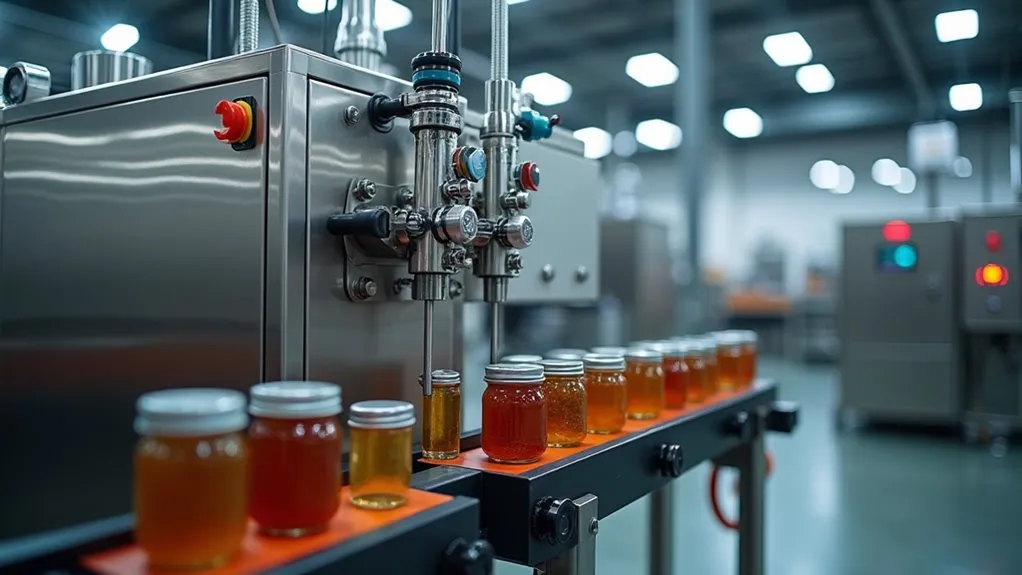
Medium-scale producers seeking to enhance efficiency beyond manual methods can benefit significantly from semi-automatic jar labeling machines. These systems bridge the gap between manual and fully automatic solutions, offering notable Efficiency Gains by increasing labeling speed and accuracy. Models like the Primera AP362, capable of labeling up to 1200 containers per hour, and the VKPAK VK-T801, with speeds of 15-30 pieces per minute, cater to medium batch sizes and fluctuating volumes with precision controls for consistent placement.
Operationally, these machines require minimal training, with manual loading and activation via foot pedals or switches. Their adjustable settings accommodate various container sizes and label types, ensuring flexibility across industries like food and cosmetics. Additionally, Maintenance Ease is a key advantage, as units like the Bottle-Matic Applicators and Auto Labe 550S feature straightforward designs that reduce downtime. For growing businesses, semi-automatic labelers provide a cost-effective, scalable solution.
Top Automatic System for High-Speed Labeling
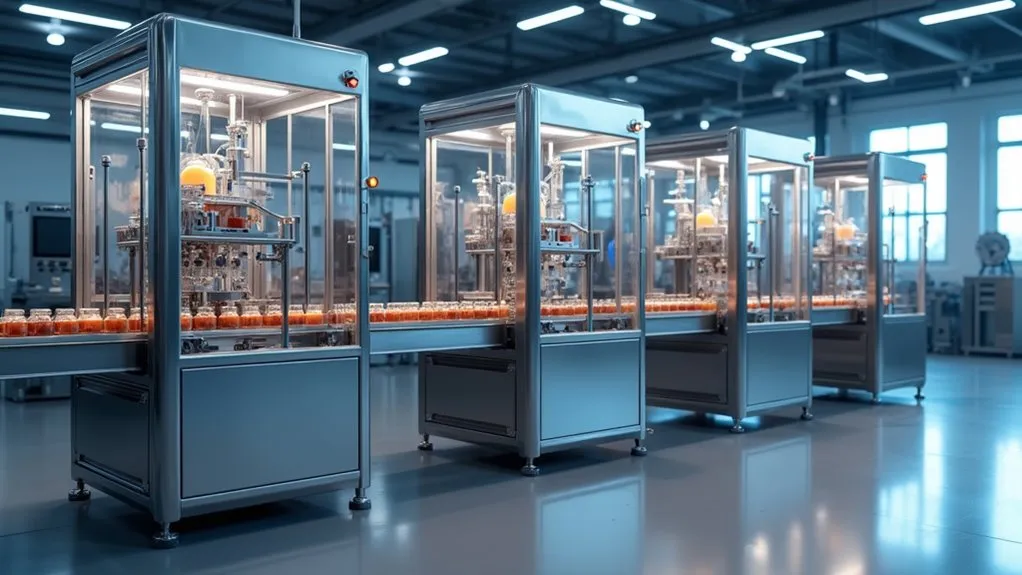
High-speed automatic jar labeling systems represent a pinnacle of efficiency for large-scale production environments, delivering throughput rates ranging from 100 to over 600 containers per minute. These systems achieve High Throughput by integrating advanced automation, seamlessly handling container feeding, spacing, and label application without manual intervention. Leading models, such as HERMA’s 132M HC or Quadrel’s rotary systems, utilize Servo Control through precise servo motors, ensuring accurate label placement even at peak speeds.
Incorporating technologies like PLCs, HMIs, and sensors, these machines synchronize with production lines for optimal performance. Rotary labelers excel with round jars, often surpassing 500 CPM, while inline systems offer robust flexibility. Features like “No Container – No Label” detection minimize waste, and optional vision systems enhance quality control. Designed for integration with upstream and downstream equipment, these systems cater to industries demanding relentless speed and precision, setting a benchmark for operational excellence in 2025.
Versatile Application-Specific Labeler for Unique Needs
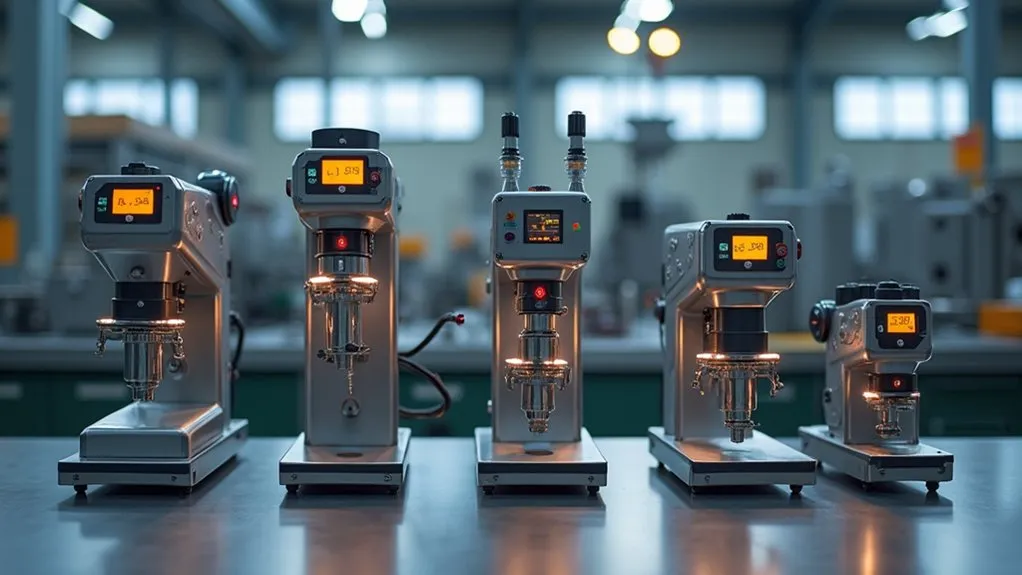
While high-speed automatic systems dominate large-scale production, many operations require tailored solutions to address specific challenges in jar labeling. Versatile application-specific labelers excel in meeting unique needs by accommodating Unique Shapes and providing Tailored Applications across diverse industries. These systems, including adaptable semi-automatic and specialized tapered jar labelers, handle cylindrical, conical, and unusual container formats with precision, ensuring accurate label placement for small batches or startups with limited space.
Multi-application automatic and tabletop compact labelers further enhance flexibility, supporting various jar sizes and shapes. Below is a comparative analysis of key features:
| Labeler Type | Key Feature | Best Use Case |
|---|---|---|
| Semi-Automatic | Handles Unique Shapes | Small batches, startups |
| Tapered Jar Labeler | Adapts to conical formats | Conical jars, cans |
| Multi-Application Automatic | Tailored Applications for variety | Diverse industries |
| Tabletop Compact | Easy changeover, affordability | Unusual shapes, limited volume |
| Robotic Systems | Flexibility, automation | Changing content, complex tasks |
Innovative Technology in Jar Labeling for 2025
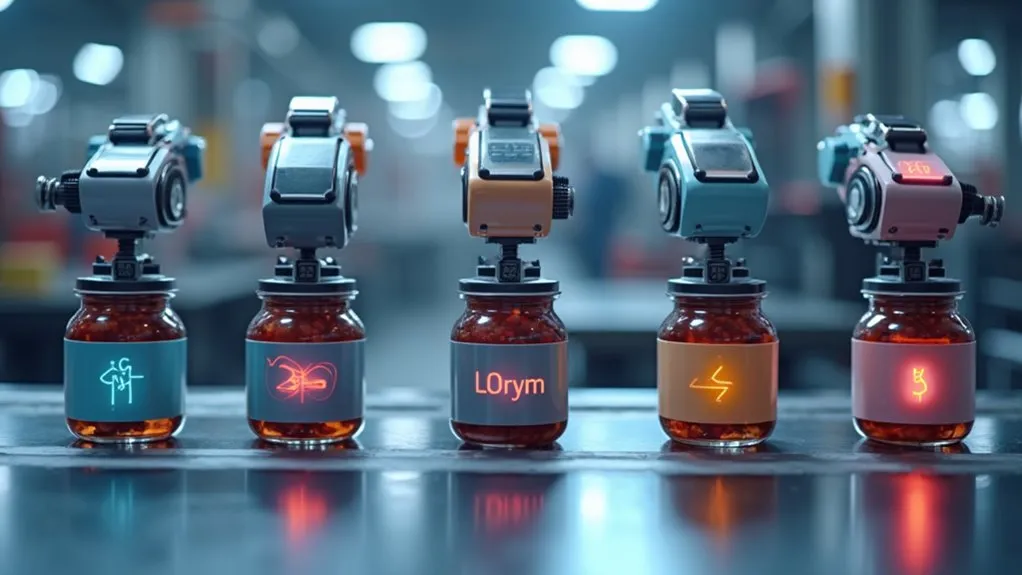
Emerging technologies are set to redefine jar labeling by 2025, introducing unprecedented precision and efficiency to the industry. Advanced systems leverage AI and machine learning for real-time adjustments and defect detection, while automation and robotics ensure high-speed, accurate label application across complex shapes. Sustainability drives Green Innovations, with eco-friendly materials and linerless labeling reducing waste and carbon footprints.
Key advancements shaping this landscape include:
- AI Optimization: Algorithms enhance quality control and predictive maintenance, streamlining workflows.
- Robotic Precision: Automated systems manage diverse jar orientations at rates up to 40,000 units per hour.
- IoT Integration: Smart labels with RFID and QR codes enable real-time tracking and consumer transparency.
- Sustainable Tech: Energy-efficient machines and biodegradable labels align with environmental goals.
These innovations ensure scalability and consistency, positioning jar labeling technology at the forefront of industrial efficiency and ecological responsibility for 2025.

 Tiếng Việt
Tiếng Việt 日本語
日本語 中文 (中国)
中文 (中国) 한국어
한국어